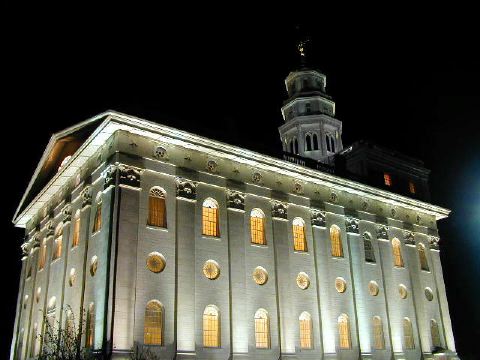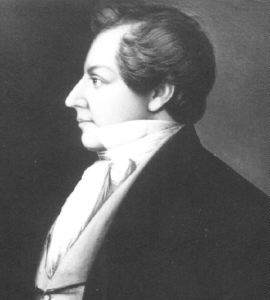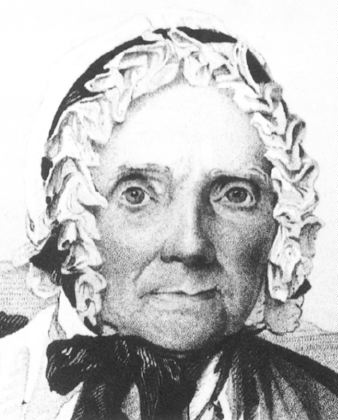
Photo courtesy of Scot Facer Proctor
Reprinted from Meridian Magazine (June 6, 2002)
©2002 by John P. Pratt. All rights Reserved.
| 1. Who Was Joseph Smith |
| 2. Joseph Smith's birth: 1 Tebeth |
| 3. Hyrum Smith's birth: 15 Shebat |
| 4. Martyrdom: 10 Tammuz |
| 5. Lucy Mack Smith's birth: 10 Tammuz |
| 6. A Day to Rejoice! |
| Notes |
 |
It has recently been suggested that the star constellations, which were reportedly revealed to the Prophet Enoch, testify of exactly what the place of Joseph Smith in the Priesthood organization of this earth is. While that conclusion took four detailed articles to derive,[2] let us briefly review the result.
There are four "cornerstone" constellations which are each located at the corners of a great square in the sky, and which also are included in the circle of twelve constellations known as the zodiac. Those four constellations each contain a bright star, and at the time of Enoch, each was located near the position of the sun in the sky on the first day of the four seasons. Moreover, an angel told Enoch that each of those stars represents one of the faithful servants of the Lord. From the four figures, the star names, and a variety of scriptural clues, it was possible to deduce not only who those four men are, but also their apparent priesthood positions and responsibilities.
 |
The similarity of the roles of Jesus Christ and Joseph Smith for the salvation of mankind was apparently emphasized in ceremonies of the law of Moses. Every day two lambs were sacrificed, one at dawn and one in the afternoon. It has been suggested that the first lamb sacrificed at dawn, the meridian of their day which began at sunset, represented Jesus Christ, known as the Messiah ben Judah, the anointed one from the tribe of Judah. The second lamb sacrificed near the end of the day, representing near the end of history, likely symbolized Joseph Smith, known also as the Messiah ben Joseph, being from that tribe. Thus, Joseph Smith was apparently of such stature to have been symbolized by a daily sacrifice in the law of Moses.[3]
Thus, we see that the position of Joseph Smith in priesthood authority is high indeed, being above that of Abraham, Moses, and Peter. His prudence in not revealing his true identity appears wise, for even more men would have been tempted to rise up and slay him before his time, as they did the Savior when he hinted at who he really was.
So what does all of this have to do with the birth and death dates of Joseph Smith? The main point is to understand that Joseph Smith is one of four great men who preside over the earth, and that each of these men was associated with the beginning of one of the four seasons. Several articles have been published about the importance of the dates of the birth, death, and resurrection of the Lord and Savior Jesus Christ.[4] They have also emphasized the importance of those dates on the Hebrew calendar. What about the dates of the birth and death of Joseph Smith?
What was the day 23 Dec 1805 on the Hebrew Calendar? While the true Hebrew Calendar is not yet perfectly understood, all indications are that the evening of 23 Dec 1805 began the Hebrew day 1 Tebeth, the precise day of the winter solstice on that calendar.[6] The identification of Joseph Smith as one of the four angels associated with the four seasons suggests that his birth date was carefully planned to coincide with one of the four seasonal markers on a calendar which God has endorsed. On the Hebrew calendar, the first day of every month is considered a holy day, so Joseph Smith was not only born on a holy day, but apparently was the standard bearer for the day of the winter solstice throughout all time.
 |
Hyrum Smith was born on Sun 9 Feb 1800. The evening of that day began the day 15 Shebat on the Hebrew calendar, which is also a holy day on the Hebrew calendar. It is often called the "New Year for Trees." So what is its significance? Its true meaning has been lost to the Hebrew people, and the only explanation of its importance is usually given as the time when "the fruit of the trees begins to form."[7] We may know more about it by and by, but at present it appears that it may have priesthood significance. For example the choosing of the Twelve Apostles in modern times occurred on Sat 14 Feb 1835, 15 Shebat. However, until a pattern of several such dates is found, that one occurrence could be simply only a chance coincidence. More research is required to really understand the meaning of 15 Shebat. In any case, the day 15 Shebat is a holy day on the Hebrew calendar.
The answer is "No" because currently it is not a holy day, but the answer should be "Yes" because it is tied to the fall of Jerusalem and fits the pattern of four Days of Atonement. Let us consider each of these aspects in more detail.
Currently on the Hebrew calendar there is a period of 3 weeks during the summer, often called simply "The Three Weeks." They begin with a fast day on 17 Tammuz and end with a fast day on 9 Ab, three weeks later. Those three weeks tend to begin in late June or early July, depending on the moon's phase, which is the basis of beginning the Hebrew month. Both of those days are associated with the fall and destruction of Jerusalem, both by Nebuchadnezzar in 587 BC and also by Titus in AD 70. The three weeks are observed as a "dark time", a time to contemplate the fall of their holy city and temple. During those three weeks, traditionally no weddings or other joyous celebrations are observed, particularly those involving music.[8]
The fact is that the actual day of burning of the temple both times is believed to have occurred on the last day of the fast, 9 Ab. I have researched this claim, and accept it as true. The temple was apparently burned the first time on Sat 23 Jul 587 BC, 9 Ab on the Hebrew Calendar. It was destroyed again on Sat 2 Aug AD 70, which was also 9 Ab.[9] Hence, there is strong reason to remember the day 9 Ab as a fast day of mourning, and as the end of a period of sadness.
What about the first day of the Three Weeks, being 17 Tammuz? It turns out that it is only known to be associated with the fall of the second temple, being the day on which the daily sacrifice was stopped.[10] In a way, that was the beginning of the destruction of that temple. Most scholars do not believe, however, that the date was associated in any way with the first fall of Jerusalem. Instead they point to the day 9 Tammuz when the city of Jerusalem fell (2 Kings 25:3, Jer. 39:2, 52:6). Shortly after the fall, there was a fast held in the fourth month (Tammuz) and most scholars feel it was held on either the 9th or 10th of Tammuz at that time. If it was the 10th, then it would have coincided with Joseph and Hyrum's martyrdom date on their calendar.
Tempting as that might be, I don't think it was the case. I believe the ancient fast of the fourth month was indeed held on 17 Tammuz, just as it is today. There is reason to believe that it commemorated the day on which Nebuchadnezzar first took captives from Jerusalem, including Daniel, on Sat 18 Jun 605 BC, 17 Tammuz, shortly after he won the Battle of Carchemish in Syria.[11] The very day probably marked the official beginning of the 70 years of captivity to Babylon according to the Lord's reckoning on the Hebrew Calendar. That data point would have been well known during the captivity, and would represent the beginning of the days of mourning.
So if the Hebrew fast days are correct, what about Joseph Smith's death date? It turns out that it completes the pattern of Four Days of Atonement on the Hebrew calendar. Currently there are three out of four possible days, which are associated with the four seasons. The official "Day of Atonement" is on the tenth day of the seventh month, Tishri, in the fall. It is a fast day, and the holiest day of the year on the Hebrew Calendar. It has a counterpart in the spring, which is the tenth day of the first month, Nisan. That is the day on which the lamb was to be chosen to be the Passover sacrifice. There is also a corresponding fast day in the winter, being the tenth day of the tenth month. That was the day on which Nebuchadnezzar began his siege of Jerusalem, and the Lord commanded Ezekiel to write it down to remember it (Ezek. 20:1, 2 Kings 25:1, Jer. 52:4). The fourth such day to complete the set of one atonement day for each season would be the tenth day of the fourth month, being 10 Tammuz, the day on which the two witnesses were martyred.
Thus, even as the birthday of the Prophet Joseph Smith marks one of the big four season starters, so also does his death date mark one of the big four days of atonement. Even as the holy days on the Hebrew Calendar often were not recognized until the key event of that day occurred, such as the siege of Nebuchadnezzar, so also has this holy day not been recognized until after the martyrdom.
 |
It is important to note that none of this should be construed as an endorsement of astrology, which claims that the stars control our destiny. Rather, it is a testimony that God carefully plans out his work, using his own calendars. Clearly he can plan a temple dedication to occur on a special day, but what about the death date of Jesus Christ and of the Prophet Joseph Smith? John emphasized that no one could kill the Savior until his hour had come (John 7:30, 8:20, 12:23, 13:1). The Lord assured Joseph Smith that the same was true of him, and that his life span was known to the day: "Thy days are known, and thy years shall not be numbered less" (D.C. 122:9). Thus, the Lord held off any would-be slayers until they could be unleashed at the correct time. Jesus, Joseph and Hyrum would then go as lambs to the slaughter.
Thus we have several testimonies that the universe is not run by chance, and God knows the end from the beginning. That knowledge truly gives us cause to rejoice.
The Lord made a very unusual prediction through his prophet Zechariah:
And the word of the Lord of hosts came unto me, saying,
Thus saith the Lord of hosts; The fast of the fourth month, and the fast of the fifth,
and the fast of the seventh, and the fast of the tenth, shall be in the house of Judah
joy and gladness, and cheerful feasts; therefore love the truth and peace.
Thus saith the Lord of hosts; It shall yet come to pass, that there shall come people,
and the inhabitants of many cities:
And the inhabitants of one city shall go to another saying, Let us go speedily to
pray before the Lord, and to seek the Lord of hosts: I will go also.
Yea, many people and strong nations shall come to seek the Lord of hosts in Jerusalem, and to pray before the Lord. (Zechariah 8:18-22)
Here the Lord states that some day the four mourning fasts will become occasions for celebration in Jerusalem. It sounds like the change might be associated with future temples there, because many will go there to worship. The mourning is mostly related to their loss of temples, so it is not impossible to believe that their rejoicing might come from the restoration of their temple.
What does this have to do with our celebration? It turns out that Thu, 27 Jun 2002, at 5:00 p.m., is the day 17 Tammuz on the Hebrew Calendar, the first fast day of the Three Weeks of mourning. That is the fast day of the fourth month to which Zechariah was referring. So it looks as if the celebration in Nauvoo is a herald of future events in Jerusalem, which also will occur on days which are normally solemn fast days.
How comforting this knowledge of God's grand scheme is, and of his precision timing. We know that God is in his heavens and his designs and purposes are never frustrated. He knows the end from the beginning, and the apparently tragic deaths of both the Savior and the martyrs Joseph and Hyrum were all a part of an overall plan, calendared from the foundation of the world. It is truly a time to rejoice!